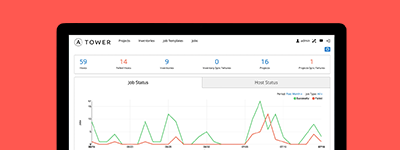rds_subnet_group - manage RDS database subnet groups
New in version 1.5.
Synopsis
Creates, modifies, and deletes RDS database subnet groups. This module has a dependency on python-boto >= 2.5.
Requirements (on host that executes module)
- python >= 2.6
- boto
Options
| parameter | required | default | choices | comments |
|---|---|---|---|---|
| aws_access_key |
no | AWS access key. If not set then the value of the AWS_ACCESS_KEY_ID, AWS_ACCESS_KEY or EC2_ACCESS_KEY environment variable is used. aliases: ec2_access_key, access_key | ||
| aws_secret_key |
no | AWS secret key. If not set then the value of the AWS_SECRET_ACCESS_KEY, AWS_SECRET_KEY, or EC2_SECRET_KEY environment variable is used. aliases: ec2_secret_key, secret_key | ||
| description |
no | Database subnet group description. Only set when a new group is added. | ||
| ec2_url |
no | Url to use to connect to EC2 or your Eucalyptus cloud (by default the module will use EC2 endpoints). Ignored for modules where region is required. Must be specified for all other modules if region is not used. If not set then the value of the EC2_URL environment variable, if any, is used. | ||
| name |
yes | Database subnet group identifier. | ||
| profile (added in 1.6) |
no | uses a boto profile. Only works with boto >= 2.24.0 | ||
| region |
no | The AWS region to use. If not specified then the value of the AWS_REGION or EC2_REGION environment variable, if any, is used. See http://docs.aws.amazon.com/general/latest/gr/rande.html#ec2_region aliases: aws_region, ec2_region | ||
| security_token (added in 1.6) |
no | AWS STS security token. If not set then the value of the AWS_SECURITY_TOKEN or EC2_SECURITY_TOKEN environment variable is used. aliases: access_token | ||
| state |
yes | present |
|
Specifies whether the subnet should be present or absent. |
| subnets |
no | List of subnet IDs that make up the database subnet group. | ||
| validate_certs (added in 1.5) |
no | yes |
|
When set to "no", SSL certificates will not be validated for boto versions >= 2.6.0. |
Examples
# Add or change a subnet group - rds_subnet_group state: present name: norwegian-blue description: My Fancy Ex Parrot Subnet Group subnets: - subnet-aaaaaaaa - subnet-bbbbbbbb # Remove a subnet group - rds_subnet_group: state: absent name: norwegian-blue
Notes
Note
If parameters are not set within the module, the following environment variables can be used in decreasing order of precedence AWS_URL or EC2_URL, AWS_ACCESS_KEY_ID or AWS_ACCESS_KEY or EC2_ACCESS_KEY, AWS_SECRET_ACCESS_KEY or AWS_SECRET_KEY or EC2_SECRET_KEY, AWS_SECURITY_TOKEN or EC2_SECURITY_TOKEN, AWS_REGION or EC2_REGION
Note
Ansible uses the boto configuration file (typically ~/.boto) if no credentials are provided. See http://boto.readthedocs.org/en/latest/boto_config_tut.html
Note
AWS_REGION or EC2_REGION can be typically be used to specify the AWS region, when required, but this can also be configured in the boto config file
This is a Core Module
For more information on what this means please read Core Modules
For help in developing on modules, should you be so inclined, please read Community Information & Contributing, Helping Testing PRs and Developing Modules.


